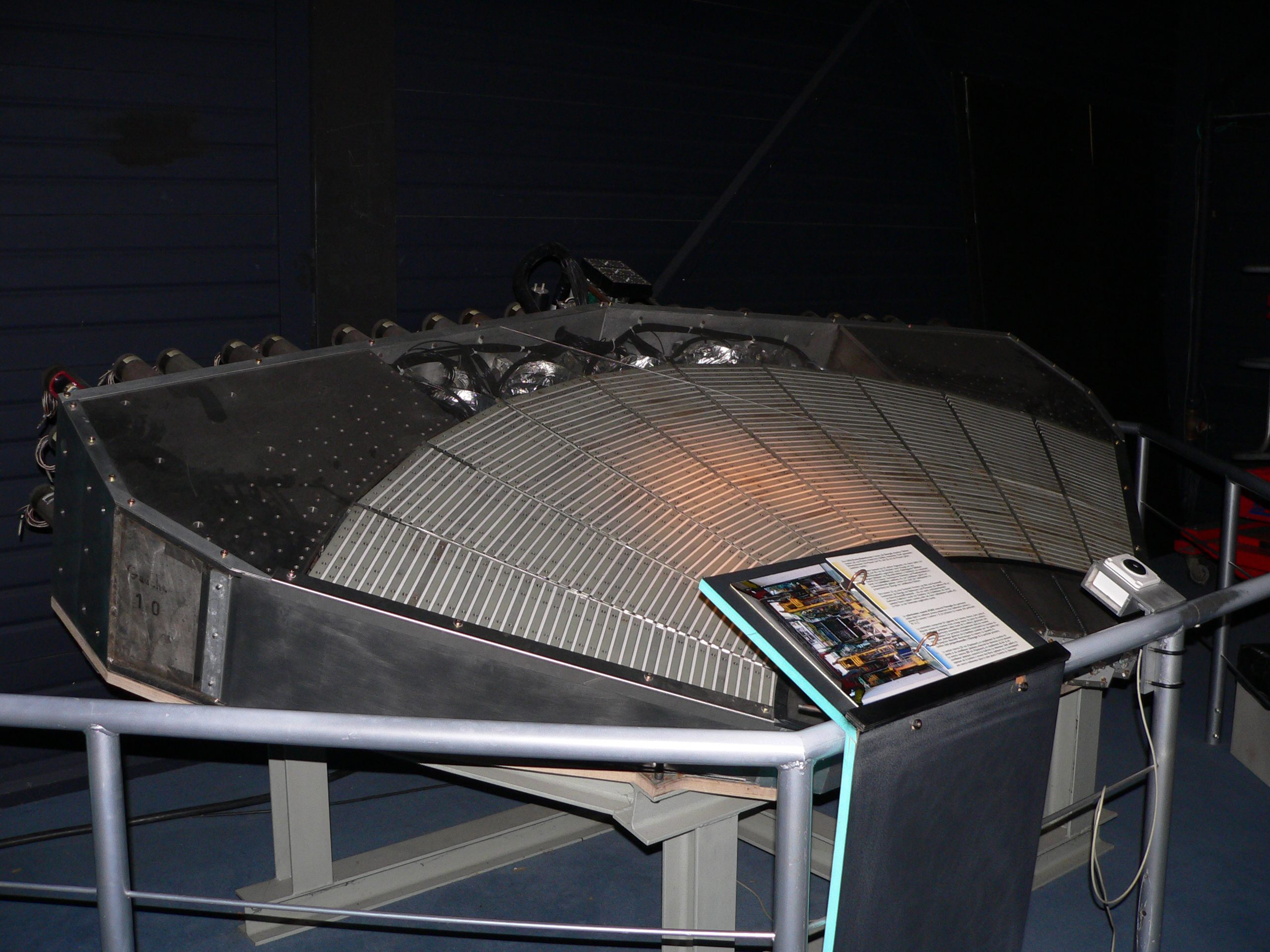|
Pair-conversion
A pair-conversion instrument detects high-energy gamma rays by providing an environment—generally a thin foil of dense metal, commonly tungsten—in which they tend to generate electron-positron pairs, and then using standard particle-physics techniques such as a microstrip detector A microstrip detector is a particle detector that consists of a large number of identical semiconductor strips laid out along one axis of a two-dimensional structure, generally by lithography. The geometrical layout of the components allows to accu ... to detect these particles. Usually there are several stacks of conversion foils and particle detectors placed on top of one another, so that the electron-positron pairs can be tracked as they pass through consecutive detectors; and at the bottom of the stack one commonly finds a calorimeter capable of measuring the energy of the electron and the positron and inferring the energy of the incoming gamma ray. An anticoincidence shield of some kind is ne ... [...More Info...] [...Related Items...] OR: [Wikipedia] [Google] [Baidu] |
Electron
The electron ( or ) is a subatomic particle with a negative one elementary electric charge. Electrons belong to the first generation of the lepton particle family, and are generally thought to be elementary particles because they have no known components or substructure. The electron's mass is approximately 1/1836 that of the proton. Quantum mechanical properties of the electron include an intrinsic angular momentum ( spin) of a half-integer value, expressed in units of the reduced Planck constant, . Being fermions, no two electrons can occupy the same quantum state, in accordance with the Pauli exclusion principle. Like all elementary particles, electrons exhibit properties of both particles and waves: They can collide with other particles and can be diffracted like light. The wave properties of electrons are easier to observe with experiments than those of other particles like neutrons and protons because electrons have a lower mass and hence a longer de Broglie wavele ... [...More Info...] [...Related Items...] OR: [Wikipedia] [Google] [Baidu] |
Positron
The positron or antielectron is the antiparticle or the antimatter counterpart of the electron. It has an electric charge of +1 '' e'', a spin of 1/2 (the same as the electron), and the same mass as an electron. When a positron collides with an electron, annihilation occurs. If this collision occurs at low energies, it results in the production of two or more photons. Positrons can be created by positron emission radioactive decay (through weak interactions), or by pair production from a sufficiently energetic photon which is interacting with an atom in a material. History Theory In 1928, Paul Dirac published a paper proposing that electrons can have both a positive and negative charge. This paper introduced the Dirac equation, a unification of quantum mechanics, special relativity, and the then-new concept of electron spin to explain the Zeeman effect. The paper did not explicitly predict a new particle but did allow for electrons having either positive or negative ... [...More Info...] [...Related Items...] OR: [Wikipedia] [Google] [Baidu] |
Microstrip Detector
A microstrip detector is a particle detector that consists of a large number of identical semiconductor strips laid out along one axis of a two-dimensional structure, generally by lithography. The geometrical layout of the components allows to accurately reconstruct the track of an incoming particle of ionizing radiation. Silicon microstrip detectors are a common design used in various experiments. The detection mechanism consists of the production of electron-hole pairs in a layer of silicon a few hundreds of micrometers thick. The free electrons are drifted by an electric field created by a pattern of anodes and cathodes interdigitated on the surface of the silicon and separated by a SiO2 insulator. See also * Semiconductor detector * Hybrid pixel detector Hybrid pixel detectors are a type of ionizing radiation detector consisting of an array of diodes based on semiconductor technology and their associated electronics. The term “hybrid” stems from the fact that the two main ... [...More Info...] [...Related Items...] OR: [Wikipedia] [Google] [Baidu] |
Calorimeter (particle Physics)
In experimental particle physics, a calorimeter is a type of detector that measures the energy of particles. Particles enter the calorimeter and initiate a particle shower in which their energy is deposited in the calorimeter, collected, and measured. The energy may be measured in its entirety, requiring total containment of the particle shower, or it may be sampled. Typically, calorimeters are segmented transversely to provide information about the direction of the particle or particles, as well as the energy deposited, and longitudinal segmentation can provide information about the identity of the particle based on the shape of the shower as it develops. Calorimetry design is an active area of research in particle physics. Types of calorimeters Electromagnetic versus hadronic such as electrons, positrons and photons. A . (See types of particle showers for the differences between the two.) Calorimeters are characterized by the radiation length (for ECALs) and nuclear interac ... [...More Info...] [...Related Items...] OR: [Wikipedia] [Google] [Baidu] |
Gamma-ray Large Area Space Telescope
The Fermi Gamma-ray Space Telescope (FGST, also FGRST), formerly called the Gamma-ray Large Area Space Telescope (GLAST), is a space observatory being used to perform gamma-ray astronomy observations from low Earth orbit. Its main instrument is the Large Area Telescope (LAT), with which astronomers mostly intend to perform an all-sky survey studying astrophysics, astrophysical and physical cosmology, cosmological phenomena such as active galactic nuclei, pulsars, other high-energy sources and dark matter. Another instrument aboard Fermi, the Gamma-ray Burst Monitor (GBM; formerly GLAST Burst Monitor), is being used to study gamma-ray bursts and solar flares. Fermi, named for high-energy physics pioneer Enrico Fermi, was launched on 11 June 2008 at 16:05 UTC aboard a Delta II 7920-H rocket. The mission is a joint venture of NASA, the United States Department of Energy, and government agencies in France, Germany, Italy, Japan, and Sweden, becoming the most sensitive gamma-ray ... [...More Info...] [...Related Items...] OR: [Wikipedia] [Google] [Baidu] |



